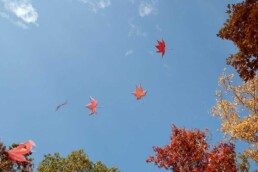As the leaves shift into a magnificent mosaic of reds, oranges, and yellows, fall provides an unequalled opportunity for photographers to capture nature’s splendour. However, the rich colours and dynamic landscapes can provide distinct issues, such as glare, reflections, and uneven lighting. Enter the Circular Polariser (CPL) filter, a must-have tool that not only improves the aesthetic quality of your images but also helps you to handle these issues with ease. In this post, we’ll look at how CPL filters work, why they’re important for photograph during autumn, and how to use them most effectively during this captivating season.
A circular polariser is a specialised filter made up of two layers of glass: a polarising filter and a spinning polarising element. When light bounces off surfaces, it may become polarised, resulting in undesired glare and reflections. The CPL filter addresses this by selectively filtering out polarised light, producing crisper visuals with higher colour saturation and contrast. In essence, the CPL filter works by allowing you to adjust the quantity of light that enters your lens. By moving the filter’s outer ring, you may change the polarisation effect, increasing the blueness of the sky, minimising glare from water surfaces, and boosting the overall quality of your images. This functionality is especially useful in autumn when photographing landscapes with vivid foliage, reflective water bodies, and dynamic skies.
Autumn is a season of transformation. As the chlorophyll fades, the colours of the leaves appear in stunning displays, making this an ideal period for landscape photography. A CPL filter can intensify these colours in a variety of ways.
- Enhanced Colour Saturation: With a CPL filter, the rich hues of autumn foliage become even more spectacular. The filter reduces glare and reflections off leaves, allowing their true colours to show through, producing beautiful photographs that capture the soul of the season.
- Contrasting Skies: A CPL filter can accentuate the autumn sky, which is often ornamented with stunning cloud patterns. Rotating the filter allows photographers to enhance the blues in the sky, producing a dramatic contrast against the warm colours of the foliage and giving depth and dimension to the composition.
- Reflections on Water: In autumn, tranquil lakes and rivers reflect the rich colours of the surrounding foliage. A CPL filter reduces reflections on water surfaces, allowing for magnificent compositions in which the colours reflect without interruption.
Useful Tips for Maximising CPL Filters during autumn:
- Choose the Right Time: The golden hours, just after sunrise and before sunset, provide the most attractive light for photograph during autumn. During these times, the sun’s low angle increases colour saturation and casts dynamic shadows. Using a CPL filter during these hours can help to enrich your photographs.
- Rotate for Effect: The brilliance of a CPL filter stems from its adaptability. As you arrange your photo, spin the filter to see how it affects the colour and glare. Experimenting with rotation can produce dramatic changes in the image, revealing colourful details in the foliage and improving the clarity of the sky.
- Watch Your Angles: The efficiency of a CPL filter is greatly determined on the angle of light. Position yourself at a 90-degree angle to the light source for the best effects, allowing the filter to reduce reflections and enhance colours. When photographing autumn scenery, consider your position in relation to the sun.
- Use a Tripod: In low-light settings, like as gloomy days or shaded regions, a CPL filter can restrict the amount of light entering the lens, requiring longer exposure times. Using a tripod can assist stabilise your camera and reduce motion blur, resulting in clean, detailed photographs.
- Consider Composition: Autumn provides numerous compositional opportunities, from winding walks covered with fallen leaves to towering trees bursting with colour. When employing a CPL filter, think about how the reduced reflections and increased colours would suit your composition. Use leading lines and foreground items to pull the viewer’s attention into the scene.
- Post-Processing Techniques: While a CPL filter can considerably improve your photographs right out of the camera, post-processing can make them even more beautiful. Adjusting saturation, contrast, and sharpness in post-production can enhance the filter’s effects, yielding magnificent final photographs.
As autumn arrives, the countryside transforms into a canvas of spectacular colours and textures, beckoning photographers to capture its magnificence. A Circular Polariser filter not only enhances these natural wonders, but it also helps photographers overcome glare and uneven lighting. Photographers can improve their photograph by learning how CPL filters work and adopting the advice suggested.
Finally, the ability to transmit emotions and tell tales through photographs is what defines photography as an art. The CPL filter is an essential instrument in this endeavour, allowing photographers to immerse their audience in the vibrant of autumn’s colours, reflections, and atmospheres. Embrace the season, grab your CPL filter, and go on a photographic tour to celebrate the ephemeral beauty of fall.




